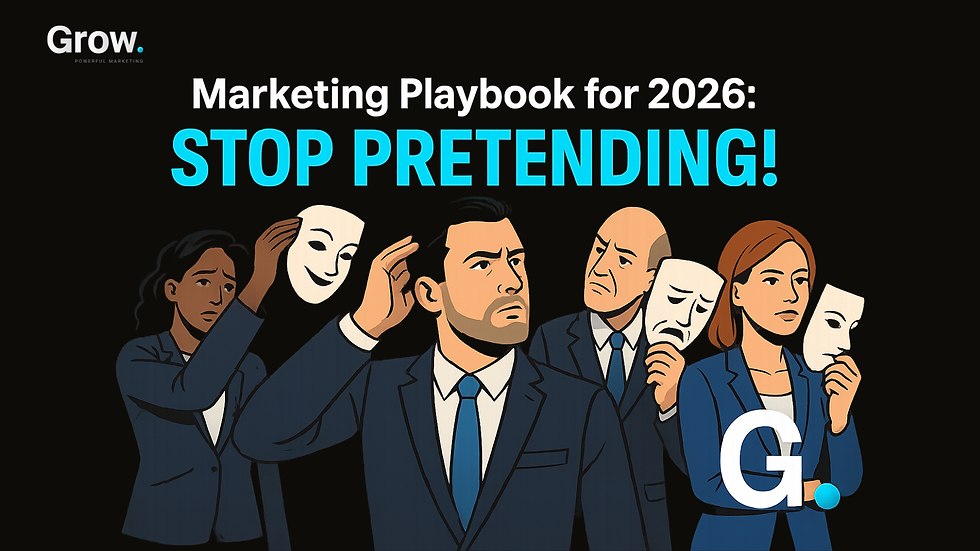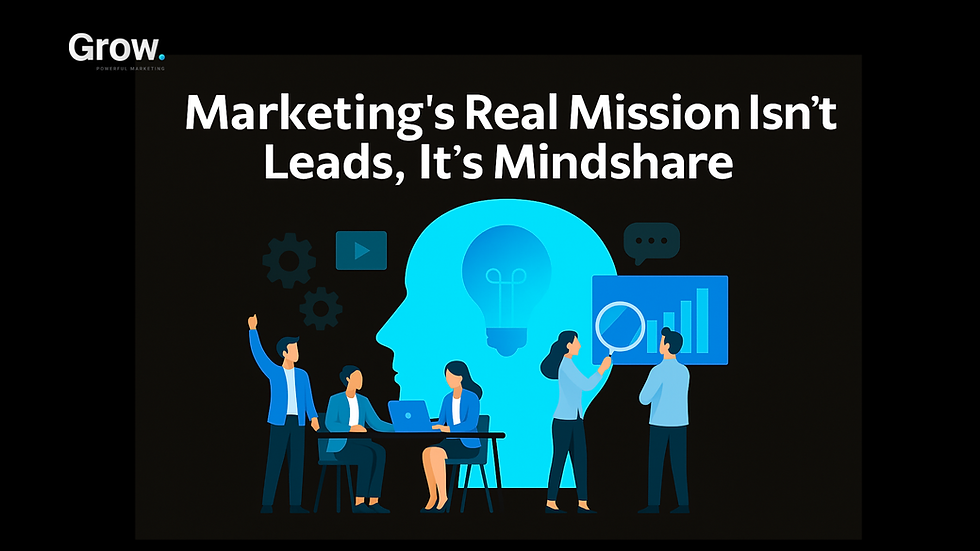Defensive Marketing Strategies for CEOs in B2B Tech
- anna3951
- Feb 7, 2023
- 4 min read
Updated: Feb 8, 2023

There is a lot going on in the world right now as we dive deeper into 2023: Inflation, Recession, Layoffs - all a part of the narrative in this new, new, new economy.
In fact, it’s been a common theme of our last couple of podcast episodes of Grow up with GROW. and our blog.
But another common theme we dive into is how CEOs can think about marketing to set themselves and their companies up for success. It’s our jam.
What is a Winning Formula for Marketing Leadership in 2023?
Marketing is the foundation of a company.
Marketers are the ones helping implement, develop, and drive your strategy.
In order for that to make sense and manifest itself, marketers must own that and recognize they also own revenue. They don’t own part of it. They own all of it.
Their goal is to make the company successful and reach its targets, which is often revenue.
But to be effective, it means marketers must start understanding and owning data more. That could include the technology stack that you own because you need to help build the workflows. It could be the data itself. Whatever it might be, they need to own and understand it.
What is an Effective Marketing Strategy?
While it’s not a new strategy, more organizations are looking to customer marketing.
When you stop to think about it, you spend all this time and money gaining new customers, you onboard them, and your job is done.
But in times of downturns or uncertainties, you recognize that you already have a customer base. There are a lot of ways and techniques you can use to expand it.
For example, you can measure your monthly active use, ensure your product is being used as intended, and help your customers learn all the features and functionality so they’re getting the most out of your product.
But it’s not just that you want them to use it. You don’t want them to churn.
So you need to think strategically about these customers and how you can market to them.
What are Defensive Marketing Strategies for CEOs in B2B Tech?
The first step is to think about what defensive marketing is.
What you must you do to protect that market share? Are there things that you do differently or are there activities you double down on?
Why Reducing Your Workforce Won’t Increase Revenue
Something you don’t want to do is to reduce your workforce. It might help you achieve specific metrics, but it will not help you increase revenue, which is your ultimate goal.
If you’re considering reducing your workforce, you need to ask how is this going to help the organization? A lot of companies think strategically and believe they have too many staff in certain departments. But this should be an always-on activity rather than when times are not great.
When you reduce headcount, you lose momentum. It also takes you longer to get you back up to where you were.
We see this occur with big companies like Google and Meta. But they operate at a whole new level. For emerging B2B tech businesses, every single person counts, and you can’t afford to lose momentum.
It might have a short-term gain on your cash flow. But it will create long-term pain on the optics of the business, the outward facing activities, support for the sales initiatives and the overall revenue and growth program.
Why You Must Focus on the Customer
An excellent defensive marketing strategy is to continually try and help your existing customer base be more successful.
You can also leverage them to see how you can expand internally. For example, there might be an organization where only one department is using your product instead of the entire business.
Another idea is to look at the data and how they’re using your product. You might discover that logins are getting shared or they’re using more than what they have purchased.
You need to think about how you see your customers. Are they loyal and how can you leverage them to expand market share? Your customers will sell your products better than your sales team.
Understand Your Customer Journey
Knowing your customer journey is just as critical as having a strategy.
You need to look at the different areas where you engage with them.
The buyer journey in the B2B space can involve anywhere from 17 to 25 people. So you can’t just think about the end-user. You need to see when people come in and out of this journey.
Understanding these intricacies can help you build a better product, have happier customers, and help you increase your market share.
What Are the Key Takeaways for CEOs?
Organizations need to consider account-based marketing. It might seem really expensive per lead, but if you are targeting and marketing to the right customer, the sales cycle will reduce, and the lifetime customer value will increase.
You need to understand your customer, their journey and why they’re with you so you can keep them. You also need to leverage your customers so you can develop your defensive marketing strategies.
Special thanks to Christina Del Villar for her expertise and insights on this important topic.




Comments